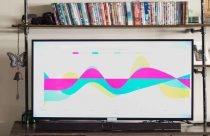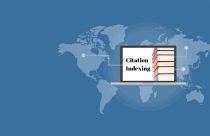Clarivate’s 2020 Journal Citation Report: “Suppressed” Journals Fight Back

How can researchers identify the best journal to publish their work? There are many possible answers to this question. However, one common criterion for choosing a journal is the impact factor. Every year, Clarivate publishes its Journal Citation Reports. These reports cover a wealth of data on more than 12,000 journals from around the world. For each journal, listed data includes total papers, total citations, an Immediacy Index and, of course, the renowned Journal Impact Factor (JIF). “Suppressed” journals formed one of the key highlights of this year’s report.
The 2020 Clarivate Journal Citation Report takes a slightly different approach to that of previous years. This time, the Report has an important focus on control of self-citation and citation stacking, as well as other forms of anomalous citation behavior. Self-citation can refer to when researchers reference either their own previously published work, or other papers within the same journal. Although sometimes necessary, excessive self-citation can artificially boost the profile of both researchers and journals. Citation stacking is when there is an anomalous exchange of citations between two or more journals – it can potentially be used to inflate a journal’s impact factor without relying on self-citation.
Controversially, Clarivate’s rules on anomalous citation led to 33 journals (0.27% of the total) being suppressed in the 2020 report.
Why Clarivate Analytics “Suppressed” 33 Journals ?
According to Clarivate, the 33 “suppressed” (or, to put it another way, excluded) journals in 2020 showed evidence of anomalous citation practices. This might include excessive self-citation and citation stacking. These practices were identified by the numerous parameters that Clarivate uses to monitor journal self-citation.
In addition, Clarivate issued an Editorial Expression of Concern for a further 15 journals, each of which had one or more published items with an abnormally high-value contribution to the JIF. Clarivate intends to continue to review this type of content, to better identify attempts to manipulate or distort the JIF.
By excluding journals that appear to be attempting to boost their JIF, Clarivate hopes to maintain the long-held trust of the scientific community in their work.
The Suppressed Journals Fight Back
Unsurprisingly, the editors of the suppressed journals are unhappy with Clarivate’s decision. A number of these journals have now issued statements defending themselves, and expressing their surprise and dismay.
Journal Body Image
One of the suppressed journals is Body Image, part of the well-known Elsevier group. In a letter to their board, the editor-in-chief of Body Image and a number of editorial staff members expressed their surprise and confusion on this decision. In reference to anomalous citation practices, the editors said:
“We share Clarivate’s view that such practices are unethical, but completely reject any suggestion that we have engaged in gaming the journal’s impact factor.”
The Body Image editors admitted that their self-citation figures appeared, at first glance, to be high. However, they argued that the data should be seen in the context of previous years:
“While these percentages, especially 2019, seem high and alarming, it is important to put them into perspective.”
According to the editors, a 50% self-citation rate (this year, Body Image’s rate was 50.4%) would only require each article to have an average of four self-citations. A typical reference list can easily include 40-60 citations. The editors went further, in a direct attack on Clarivate, finding it unacceptable that “a private, for-profit company like Clarivate setting itself up as a self-appointed and unaccountable judge.”
International Journal of Systematic and Evolutionary Microbiology (IJSEM)
Another such suppressed journal is International Journal of Systematic and Evolutionary Microbiology (IJSEM). Tasha Mellins-Cohen, Director of Technology and Innovation at the Microbiology Society (the journal’s publisher) wrote to Clarivate, stating:
“we believe the suppression to be unreasonable and … request Clarivate reinstate IJSEM in the JCR as a matter of urgency.”
According to Mellins-Cohen, Clarivate’s decision failed to consider the particular nature of the journal’s field of research. Taxonomic papers are rarely cited by researchers in other fields, which necessarily leads to a high rate of self-citation: “the primary audience of IJSEM is … taxonomists, and these are the researchers citing IJSEM.”
Mellins-Cohen did admit that the editors of IJSEM had themselves spotted high self-citation in a few groups. In fact, according to her the editors had already taken steps to prevent this. Interestingly, Mellins-Cohen also mentioned that Clarivate’s suppression of certain journals could adversely affect scientific progress in countries that place a particularly high value on the JIF. She said:
“Removing the Impact Factor of this well-respected journal with a high standard of taxonomic descriptions will create confusion, as in some countries (China notably), it is requested to publish in journals with an Impact Factor only. The risk of the present situation is that scientists from these countries will no longer submit their articles to IJSEM and the quality of taxonomic descriptions may decrease.”
Clarivate’s Response
So, what was Clarivate’s response to the appeals of suppressed journals? A Clarivate spokesperson said:
“We acknowledge that in exceptional circumstances there may be compelling editorial reasons for an atypical level of journal self-citation. In such cases we will liaise with the publisher to resolve any appeal.”
Suppression of Journals: Who’s Right?
Suppressing certain journals, and thus denying these publications the benefit of a JIF, is clearly a controversial issue. Clarivate must now carefully balance the need to be fair to each individual journal. The challenge is to do this while maintaining trust in both its own systems and the scientific publication process.
In my opinion, Clarivate’s methods for identifying anomalous citation practices are both necessary and robust. In 2020, it is more important than ever that scientists and the wider community can place their trust in published science. Finding and preventing practices such as excessive self-citation is an important part of this. At the same time, however, Clarivate must have a clear appeal process for suppressed journals. As in the case of IJSEM, some highly specialist journals may have valid reasons for a high level of self-citation. It is important that the valuable work in these journals should not suffer due to an error by Clarivate.
What is your opinion of Clarivate’s decision to suppress certain journals? Do you think the suppressed journals should be reinstated? Share your thoughts in the comments below.









